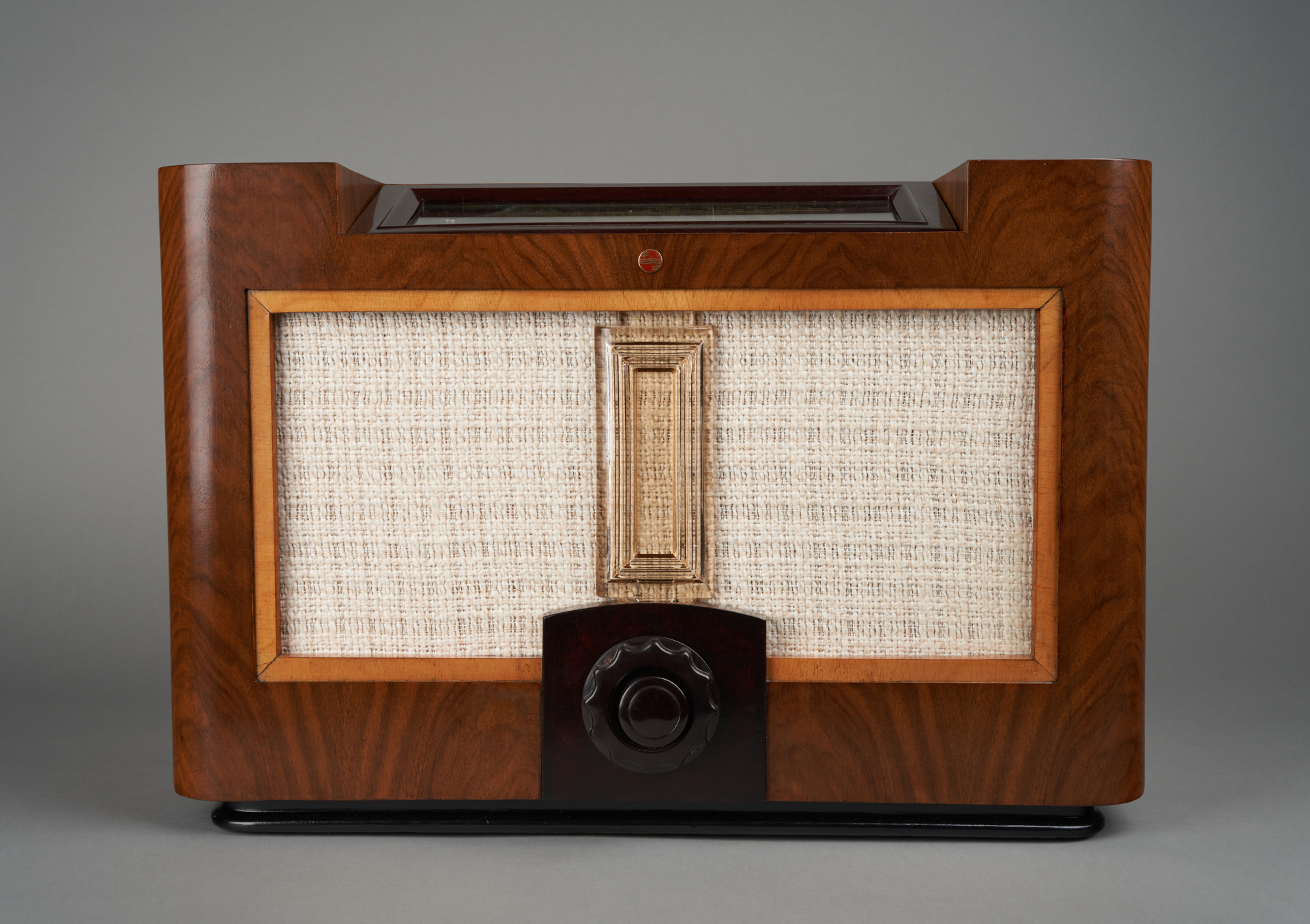
Philips 8-38A radio receiver
Polskie Zakłady Philips, / 1938Creator
Polskie Zakłady Philips
Time and place of creation
Time:
1938
Place:
Poland
The Polish Philips factory, established in Warsaw in 1922 at 59 Żelazna street, initially operated as Polsko-Holenderska Fabryka Lamp Elektrycznych SA. Manufacturing of radio receivers began there in 1930, later to become an important component of the company’s product range. Designs of all radio receivers were developed at the Philips facility in the Netherlands. The plant’s production was seasonal, lasting from autumn until spring, which means that – as was the case with other major manufacturers – new radio models were offered every new season.
In the 1937-1938 season, models from the so-called “Symphonic Series 38” were launched. The novelty of that season was a speaker with sound spreader. It was an add-on component, patented by Philips, made of “philite” plastic and mounted on the speaker diaphragm. It dispersed the treble sound in many directions, which gave the impression of stereo reception, thus improving the sound. In ordinary speakers, the directional range of spreading the treble was narrow. Another novelty was the slanted scale, which slid out beyond the outline of the receiver housing. The “monoster” was also introduced, i.e., a special tuning control, similar to a joystick. This manual control allowed almost all functions of the device to be controlled, including setting the range, tuning, and adjusting the volume and tone.
In model 8-38A, which allowed short, medium, and long wave radio band reception, new signal tuning indicators were used in the form of an electron ray tube widely known as a “magic eye”, that emitted green light. In general, the electric design of the radio, which was a superheterodyne powered from the mains with AC current, included nine vacuum tubes. In the second half of the 1930s a horizontal box layout became mandatory, and manufacturers devoted more attention to the aesthetics of the housings. Device controller was also made easier. The housing of the model 8-28 is in the category of luxury radios, equipped with all the novelties of the 1937-1938 season. It has a built-in dynamic speaker with a sound spreader, electron-ray tube tuning indicators, a horizontal housing layout, a slanting scale, and a tuning control (“monoster”). In addition, to tell it apart from the Philips radios produced outside of Poland, a decorative strip of pressed glass is mounted in the front.
Authors: Piotr Turowski, Filip Wróblewski
Philips 8-38A radio receiver
Polskie Zakłady Philips, / 1938Creator
Polskie Zakłady Philips
Time and place of creation
Time:
1938
Place:
Poland











